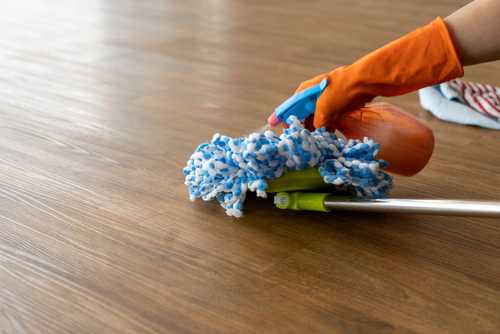
Waxing is a common and effective method of maintaining and enhancing the appearance of various types of flooring. Whether you have hardwood, tile, vinyl, or concrete floors, regular waxing helps protect the surface from scratches, stains, and general wear and tear. However, the frequency of waxing can vary depending on several factors. In this blog post, we will explore how often a floor should be waxed to ensure its longevity and beauty.
Factors that affect the frequency of waxing:
Before discussing the recommended waxing frequency, it is important to consider the following factors that can influence how often your floor needs to be waxed:
1. Foot traffic: The amount of foot traffic your floor receives is one of the primary factors determining the frequency of waxing. High-traffic areas, such as entryways, hallways, and commercial spaces, will require more frequent waxing compared to low-traffic areas like bedrooms or offices. Heavy foot traffic can wear down the wax coating faster, making it necessary to replenish it more often.
2. Type of flooring: The type of flooring you have also plays a role in determining the frequency of waxing. Different flooring materials have different maintenance requirements. Hardwood floors, for example, may require waxing every 6-12 months depending on the wear and tear, while vinyl or linoleum floors may need waxing every 3-6 months.
3. Environment and climate: The environment and climate in which your floor is located can impact its waxing frequency. Areas with high humidity or excessive moisture may require more frequent waxing as the moisture can cause the wax to deteriorate faster. Similarly, floors in areas with excessive sunlight exposure may require more frequent maintenance to protect against fading and discoloration.
4. Floor condition: The current condition of your floor also affects how often it needs to be waxed. If the floor has scratches, stains, or signs of wear, more frequent waxing may be necessary to restore its appearance and provide adequate protection.
Recommended waxing frequencies:
While the factors mentioned above can influence the recommended waxing frequency, here are some general guidelines for different types of flooring:
1. Hardwood floors: Hardwood floors typically require waxing every 6-12 months, depending on the foot traffic and wear. Regular sweeping and cleaning will help extend the time between waxing sessions.
2. Tile or stone floors: Tile and stone floors generally do not require waxing as they are more resistant to staining and damage. Instead, these floors benefit from regular cleaning and occasional sealing to maintain their appearance and integrity.
3. Vinyl or linoleum floors: Vinyl and linoleum floors usually require waxing every 3-6 months to protect against scratches and maintain their shine. High-traffic areas may require more frequent waxing.
4. Concrete floors: Concrete floors can benefit from waxing every 6-12 months, depending on the foot traffic and level of protection required. Regular cleaning and occasional reapplication of wax will help maintain their appearance and durability.
It is important to note that these recommendations are general guidelines, and it is essential to consider the specific needs and condition of your floor when determining the waxing frequency. Consulting with professionals or the manufacturer’s guidelines for your specific flooring material is always recommended.
Key considerations for effective floor waxing:
Regardless of the recommended waxing frequency, there are a few key considerations to keep in mind to ensure effective and long-lasting results:
1. Proper floor preparation: Before applying wax, ensure that the floor is thoroughly cleaned and free from dust, debris, and any previous wax or polish residue. This will allow the new wax to adhere properly and provide maximum protection.
2. Appropriate wax application: Follow the manufacturer’s instructions for applying the wax. Use a clean applicator or mop, and apply an even layer of wax to the floor, working in small sections. Allow the wax to dry completely before applying additional coats if necessary.
3. Regular maintenance and cleaning: Regular sweeping or vacuuming and damp mopping will help extend the life of the wax coating. Avoid using harsh chemicals or abrasive cleaners that could damage the wax or the flooring material.
Conclusion:
The frequency of waxing your floor depends on various factors such as foot traffic, type of flooring, environment, and floor condition. As a general guideline, hardwood floors may require waxing every 6-12 months, while vinyl or linoleum floors may need maintenance every 3-6 months. It is important to consider the specific needs of your floor and consult with professionals or follow the manufacturer’s guidelines for optimal results. Regular waxing and proper maintenance will help protect your floor from damage and keep it looking beautiful for years to come.
Got Questions? Let Us Help!
Prospect Cleaning Service is a woman-owned business with over 20 years of experience. We offer corporate cleaning & building maintenance services with specialties in the areas of complete cleaning, floor maintenance, and custodian and porter services. We serve corporate and governmental clients in New York, New Jersey, and Connecticut. Call us and schedule today!
